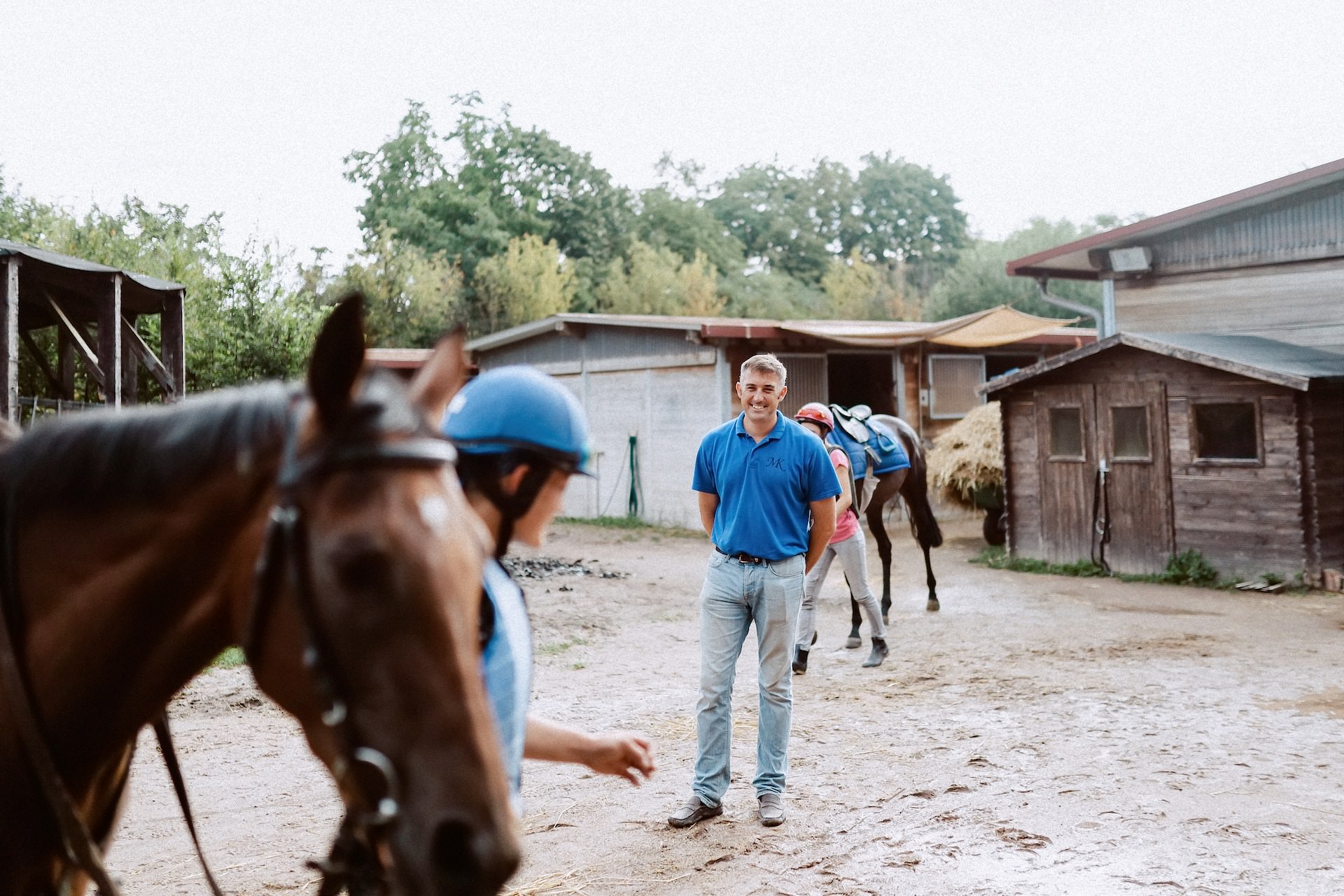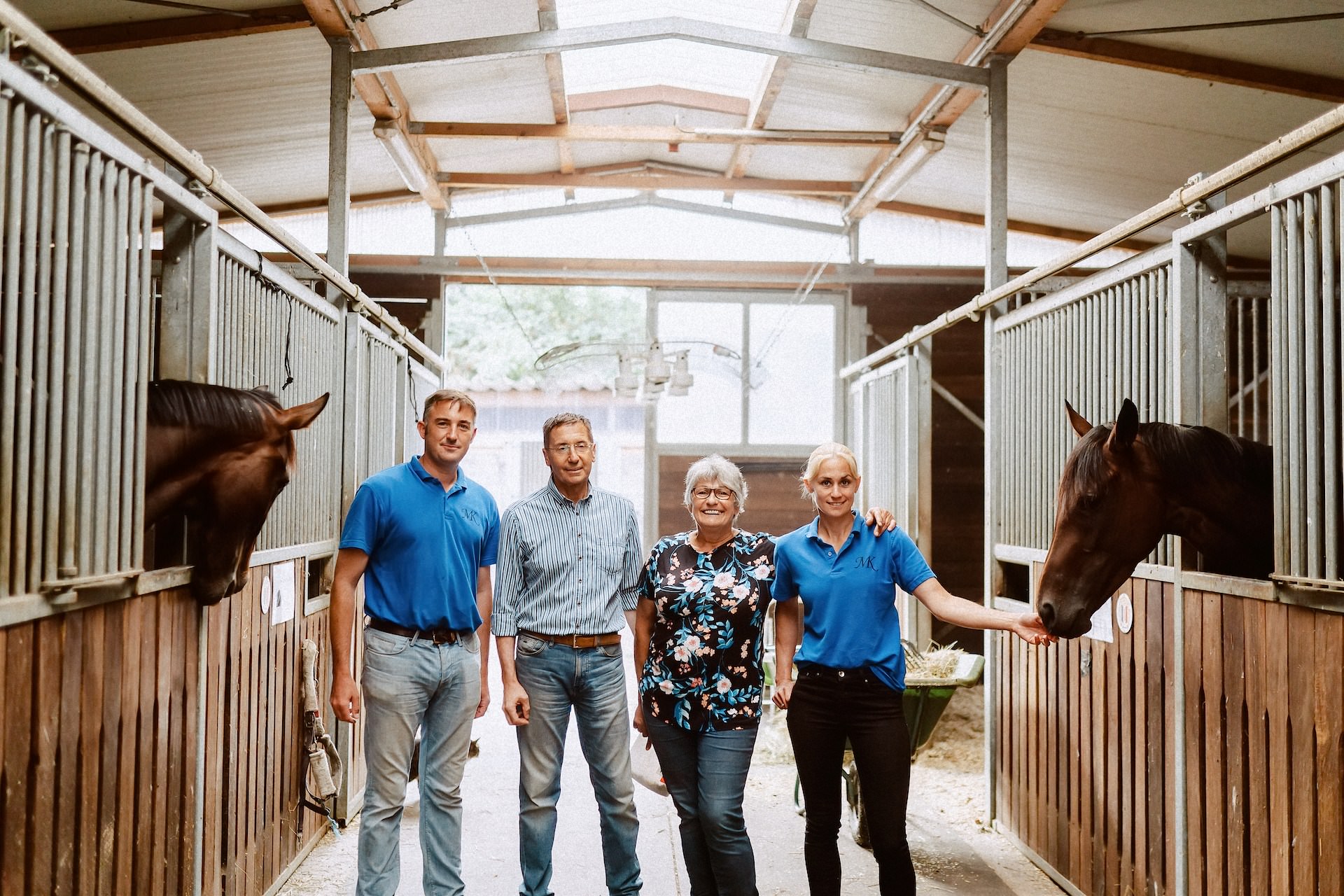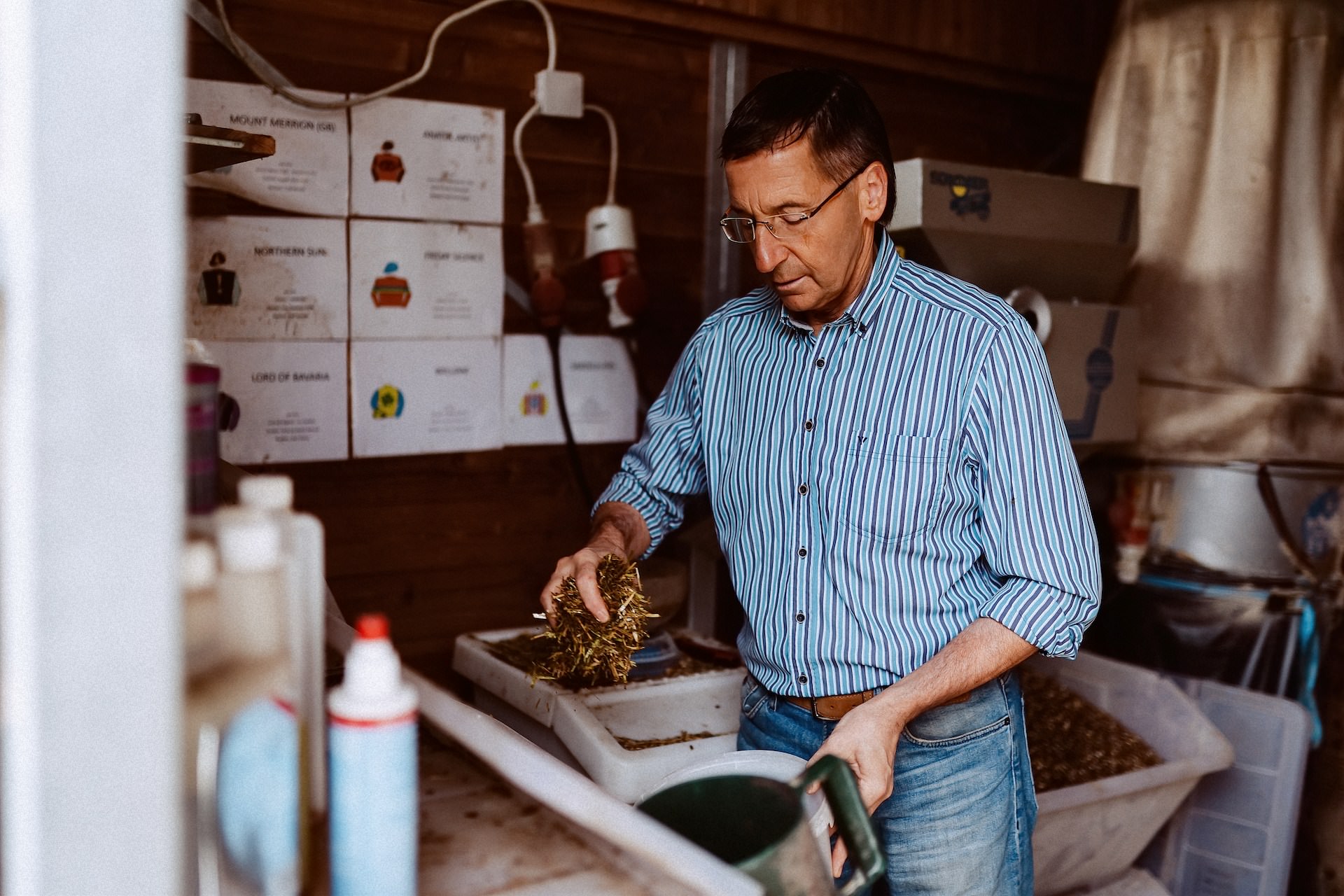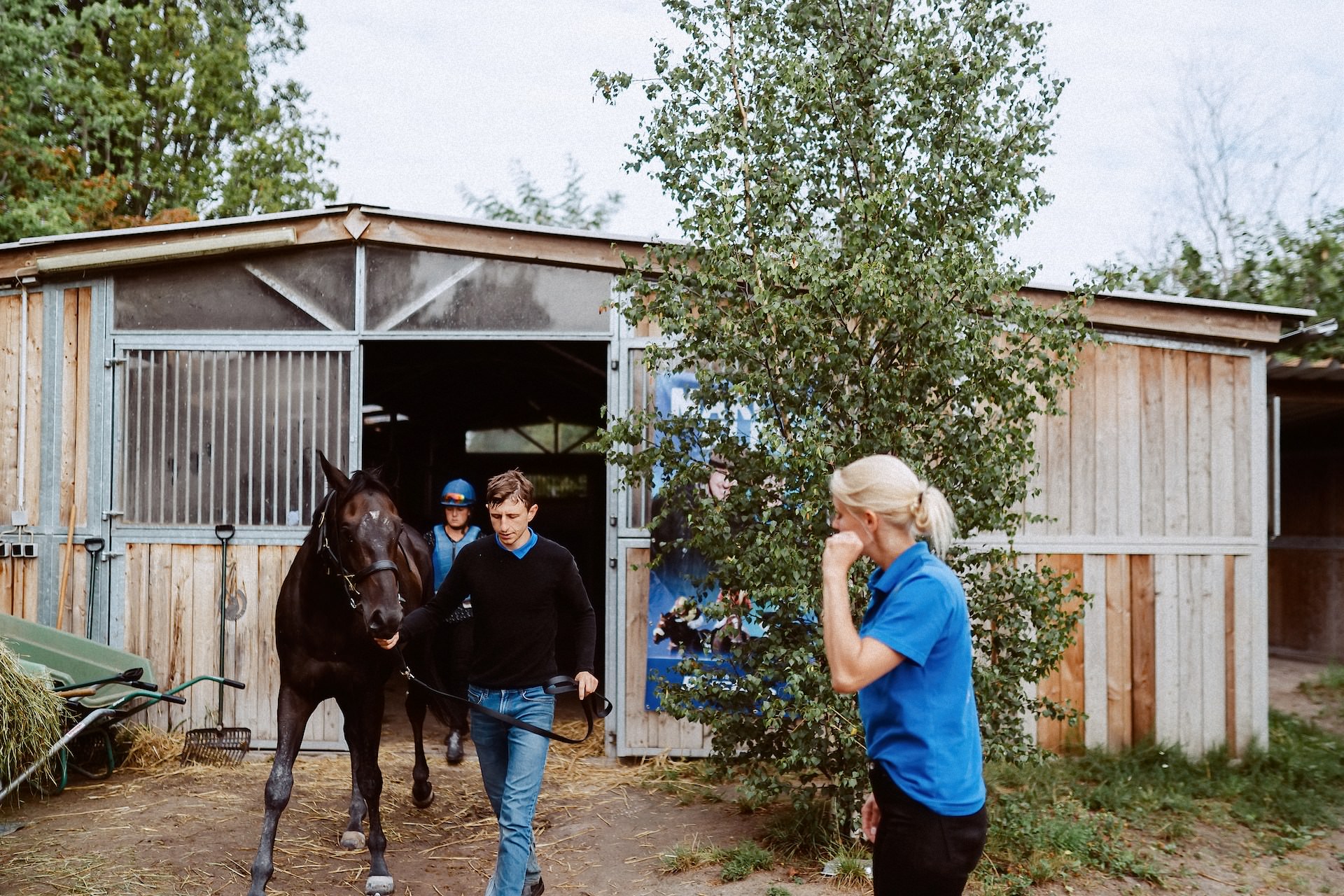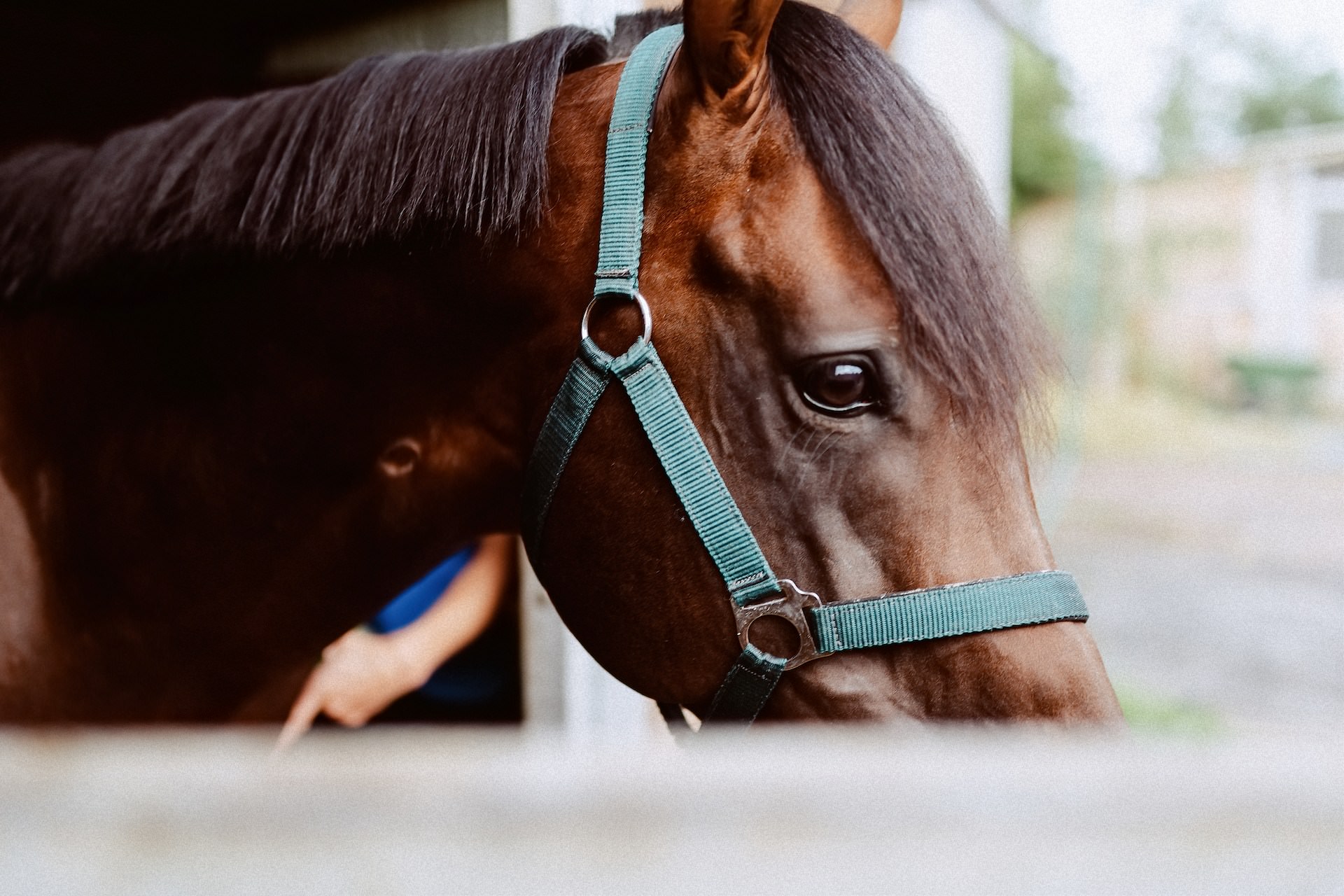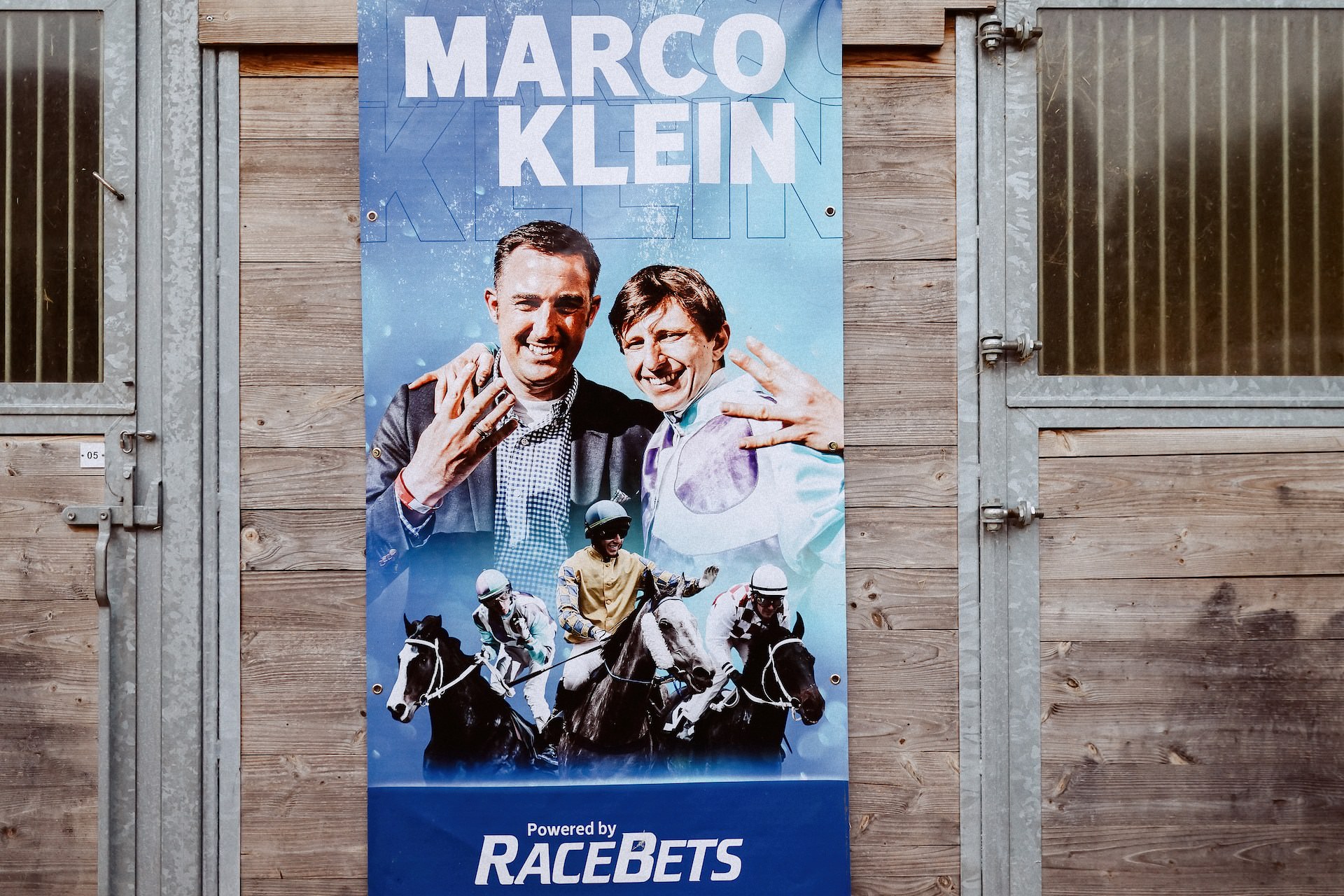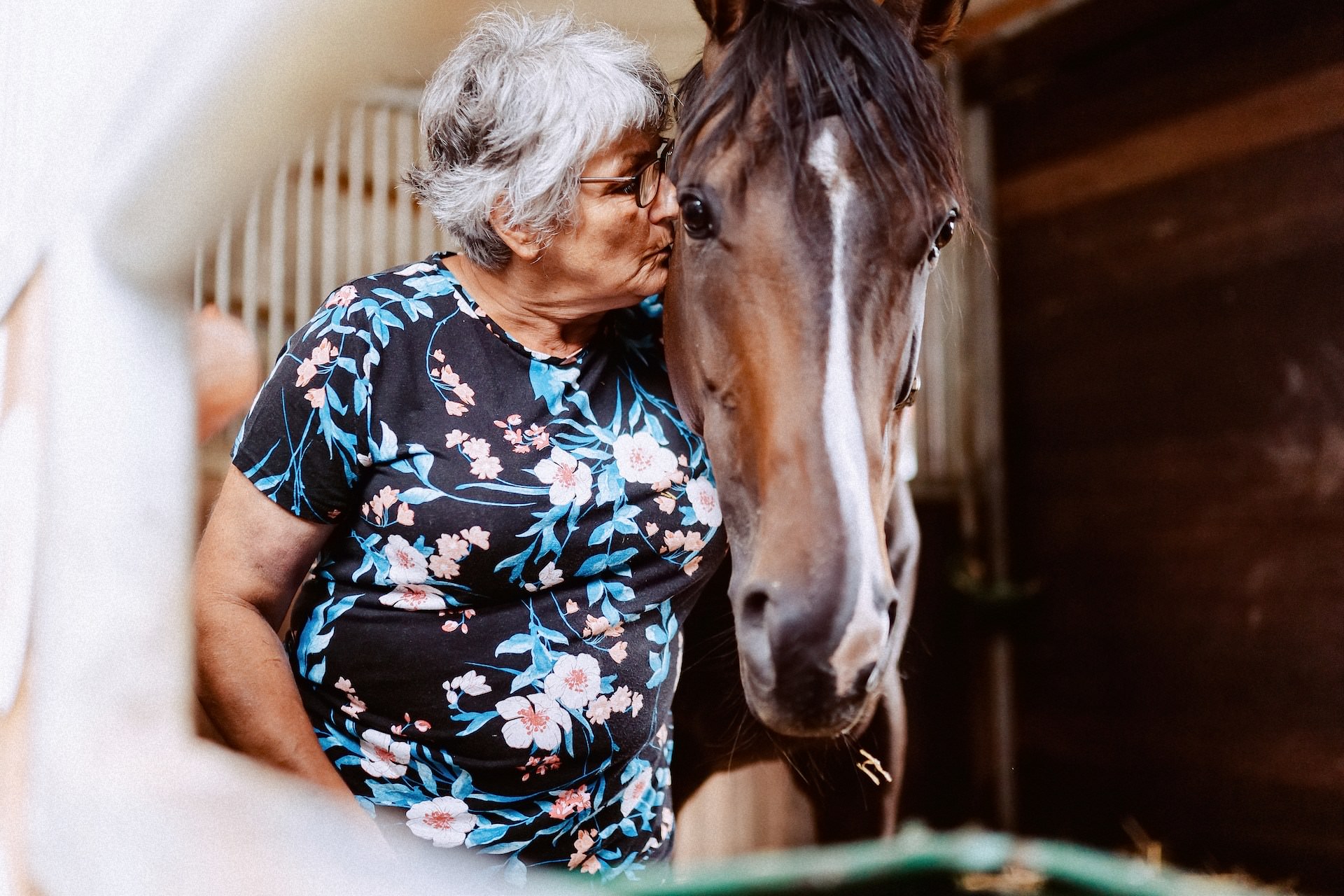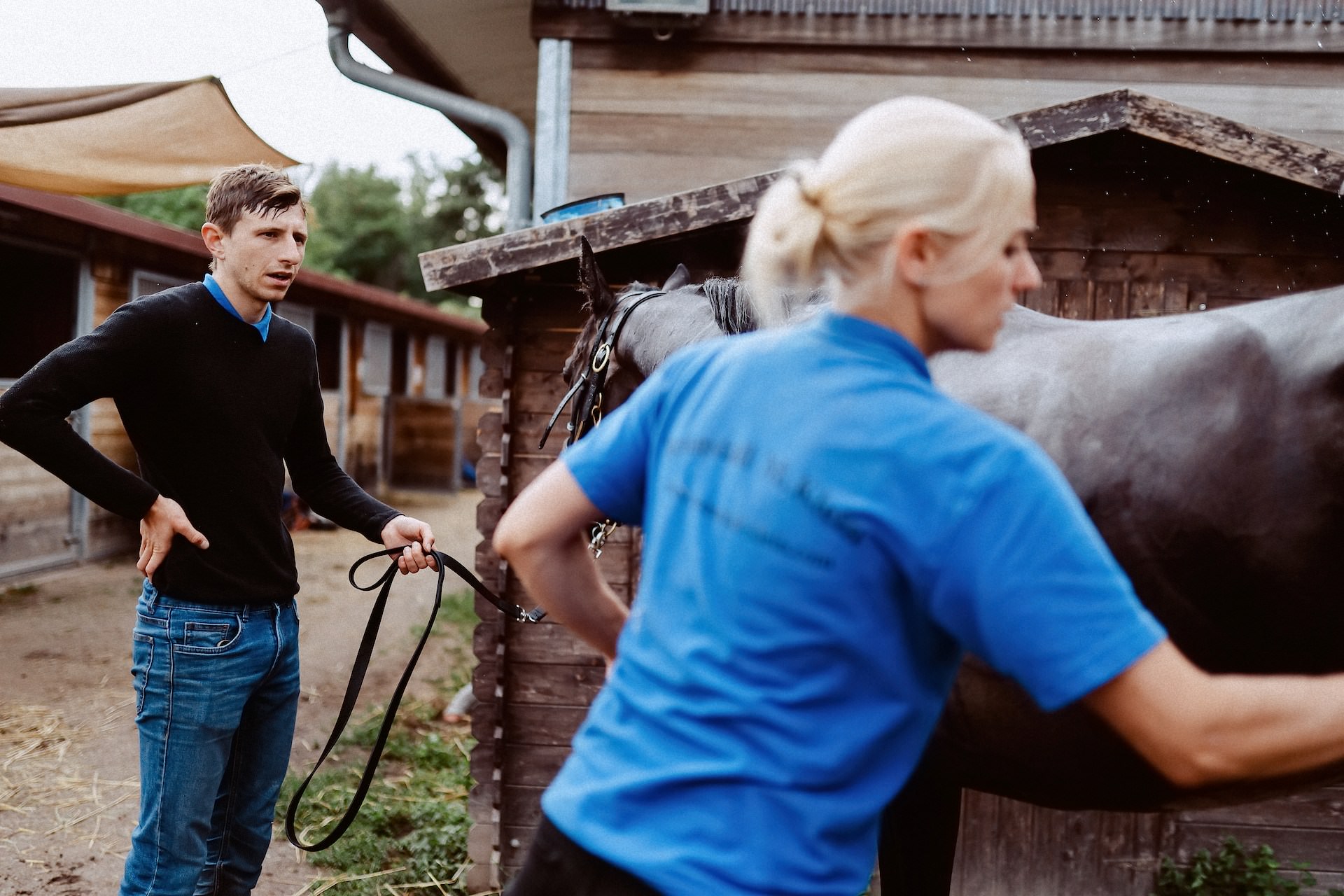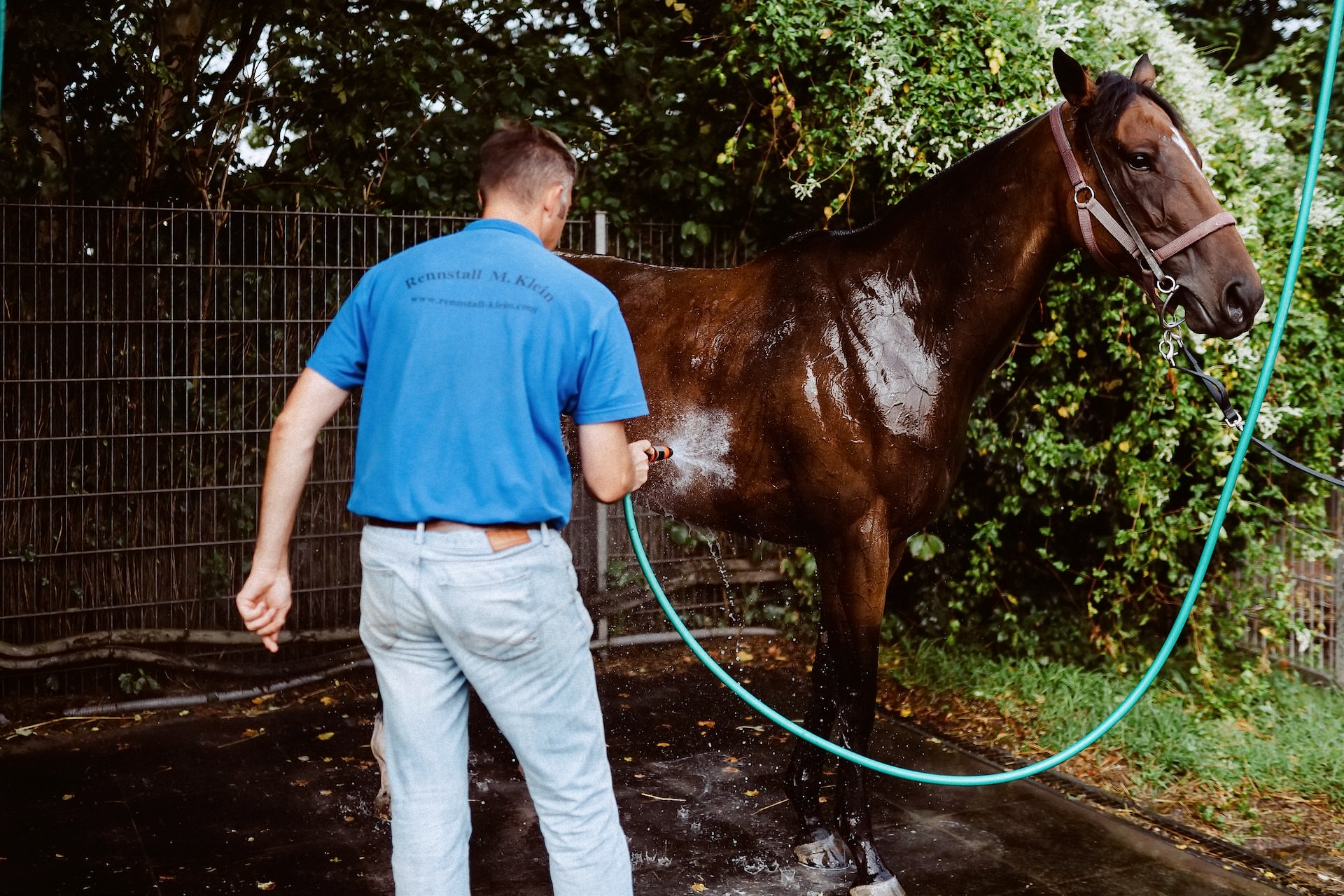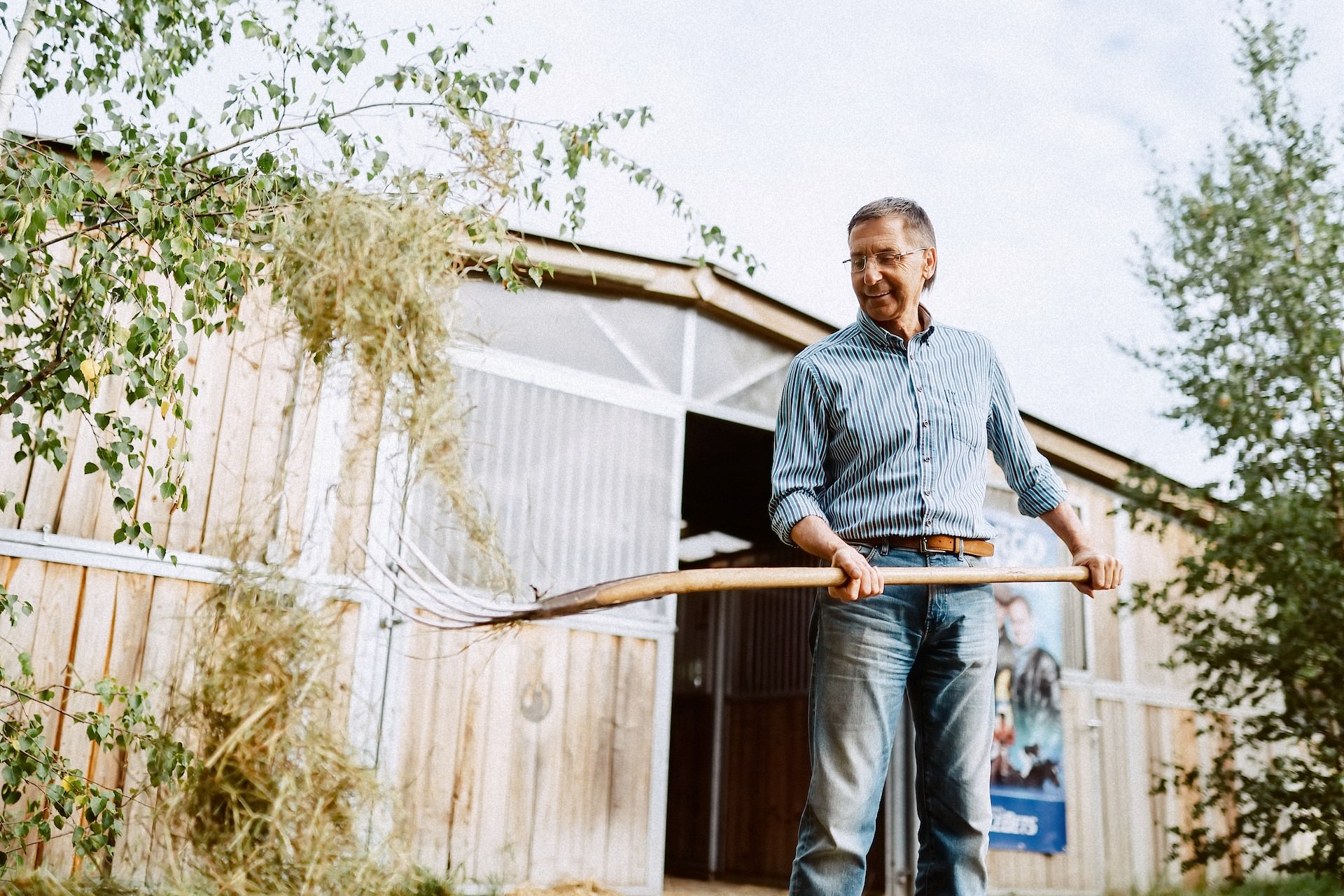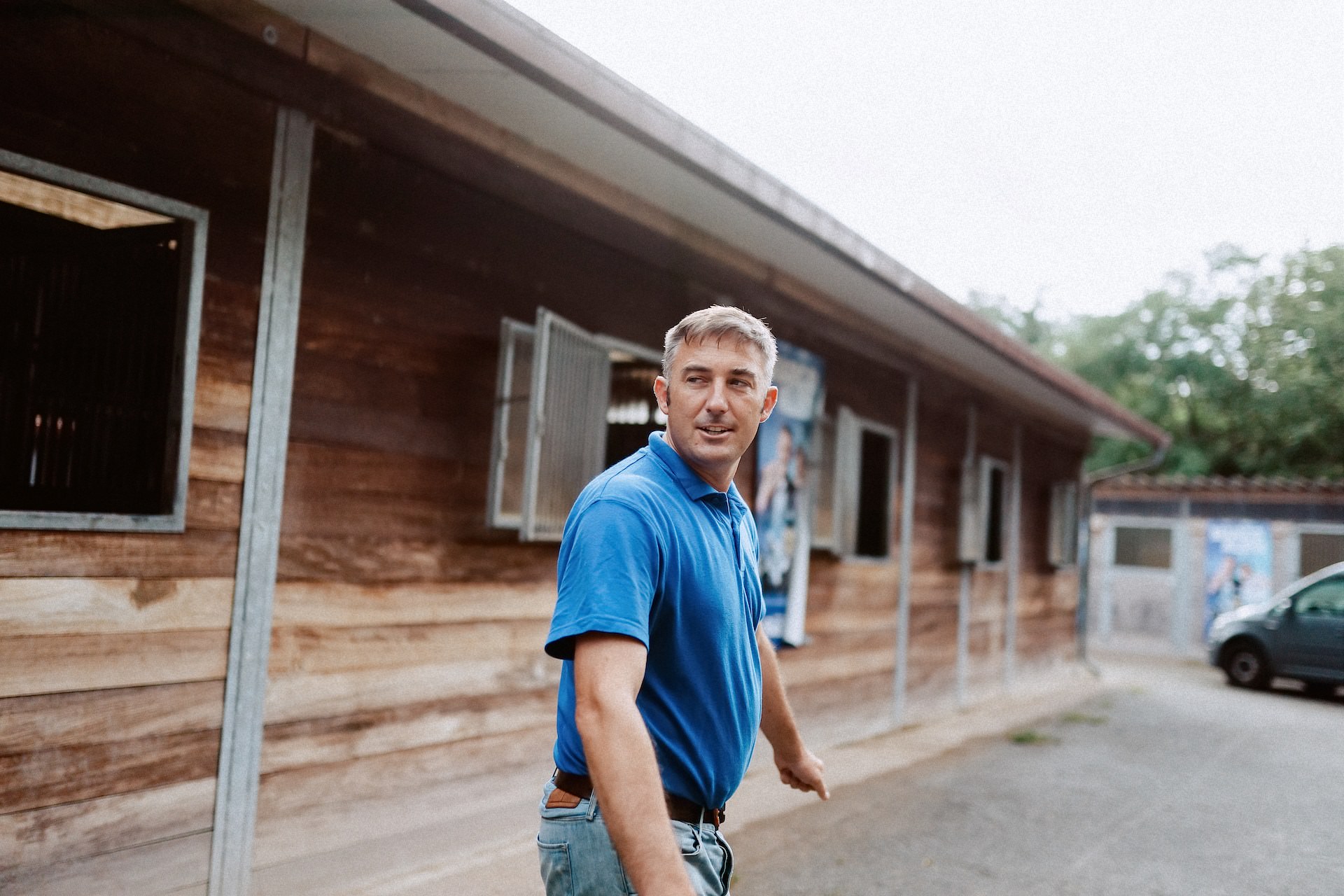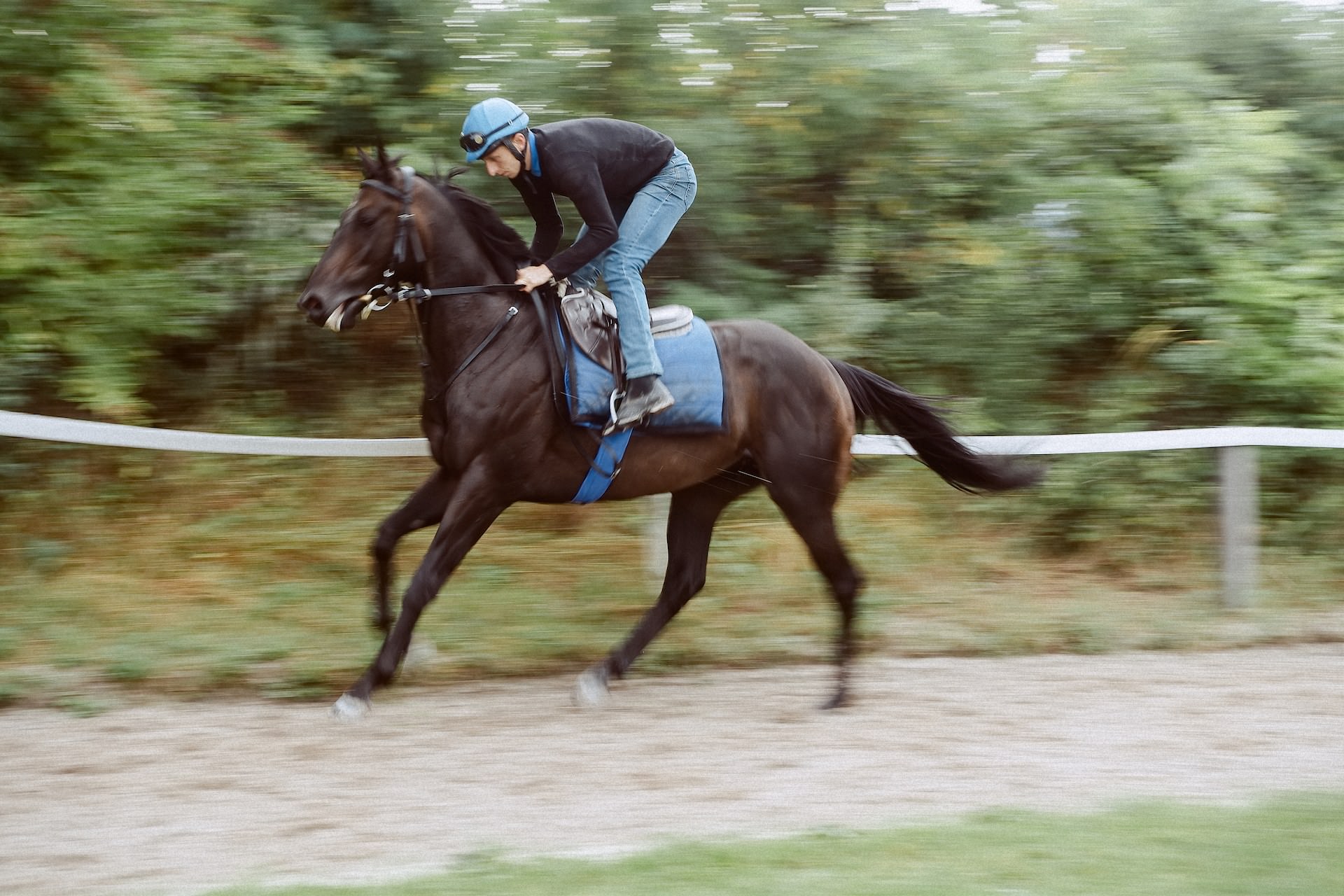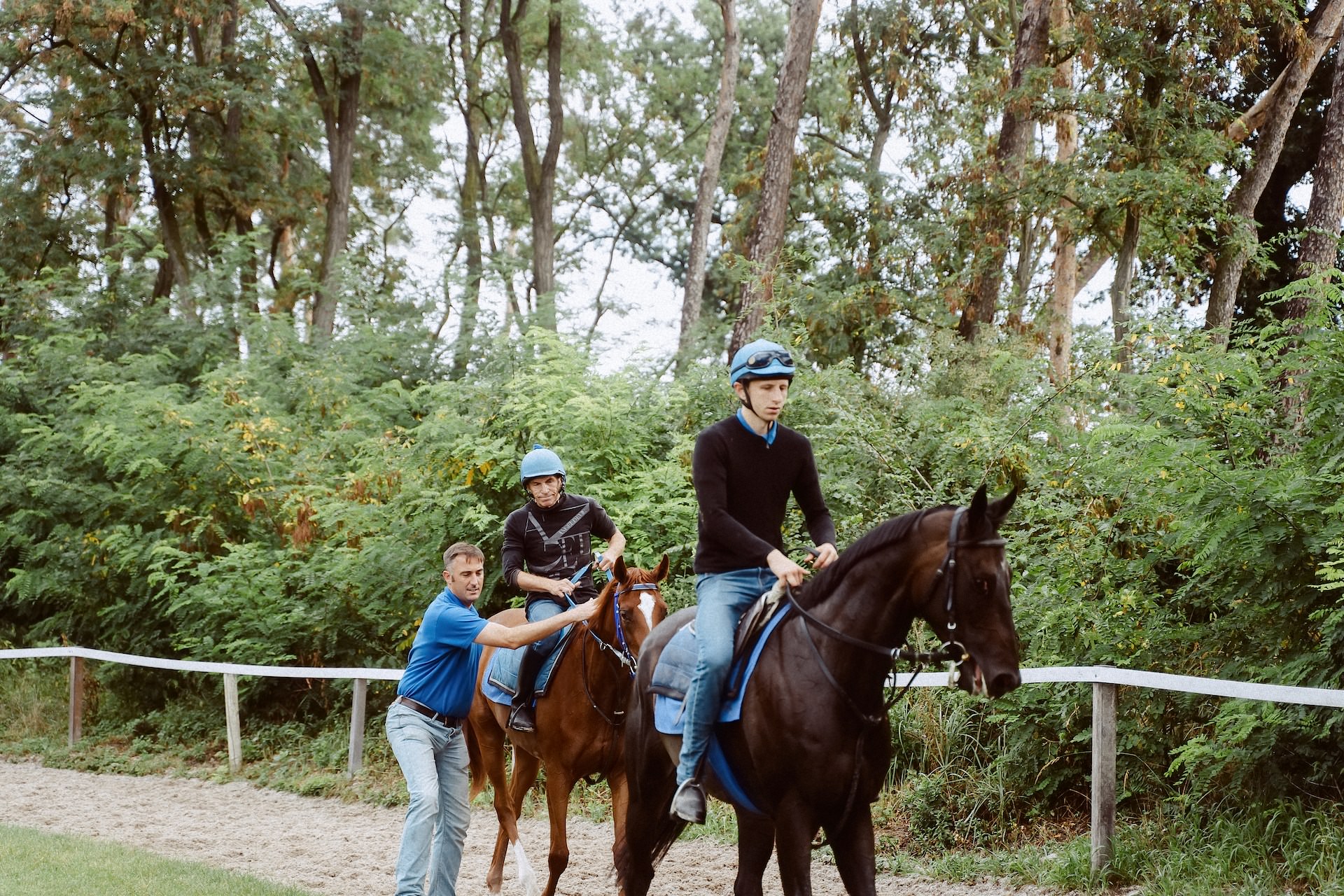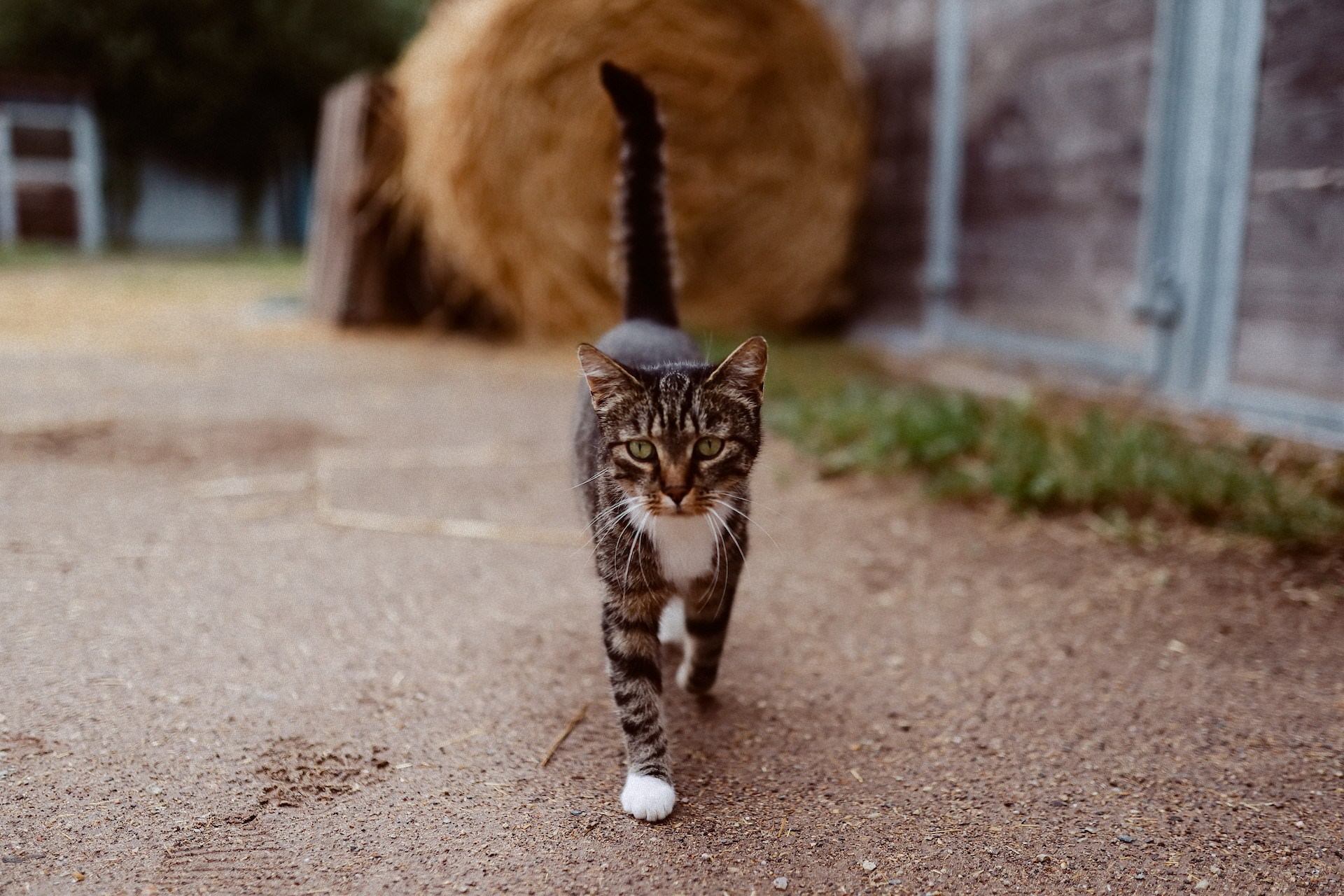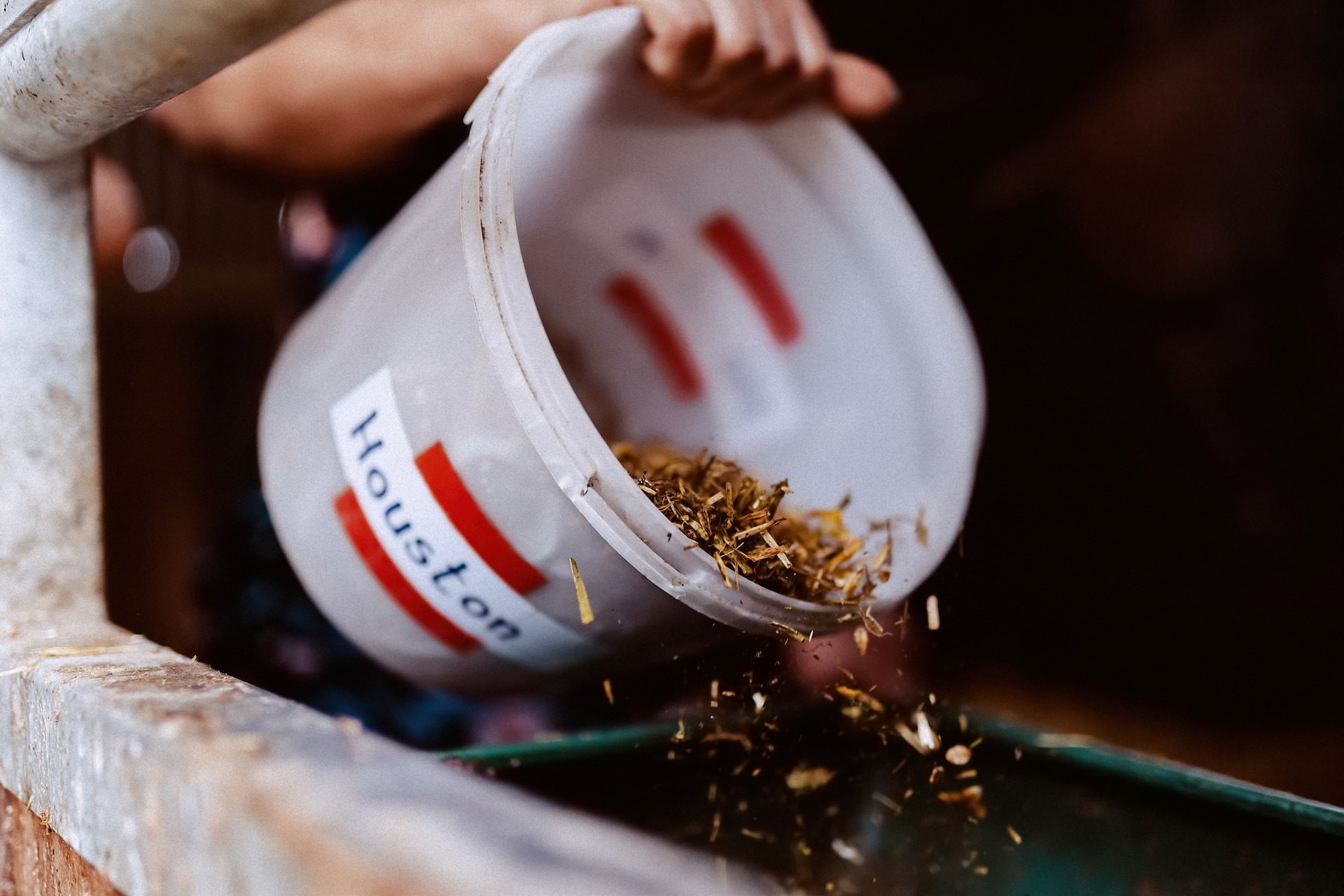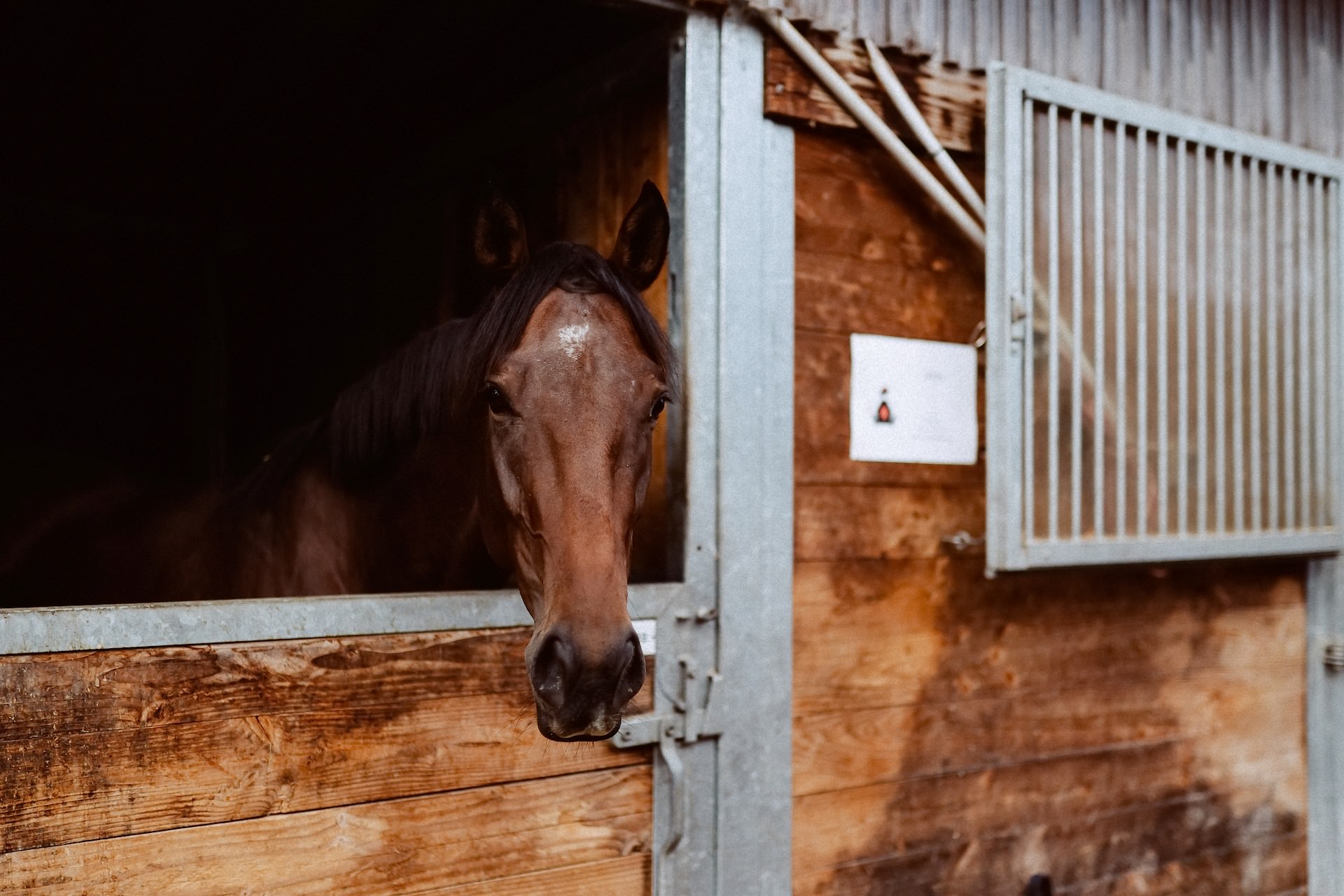Once, blue-blooded gentlemen took part in prestigious races in Mannheim. And the fascination for thoroughbreds perdures to this day. On the Waldrennbahn racetrack in Mannheim-Seckenheim, this glorious racing tradition still continues. Marco Klein trains racing horses behind the idyllic turf track — in a unique family business.
In the early mornings, stallions, geldings and mares storm along in front of the empty rows of the stand of the Mannheim Waldrennbahn racetrack and an occasional passer-by pauses for a moment curiously observing the scene. The tranquillity of the place makes it hard to believe that it is located only a few-minute drive from the city. Foxes, rabbits and roe deer venture out of the shelter provided by the wood. However, on 5 or 6 days during turf season between May and October, when thousands of people flock to the horse racing venue to marvel at fine thoroughbreds doing flat or jump racing, they prefer to stay hidden in the bordering Dossenwald forest.
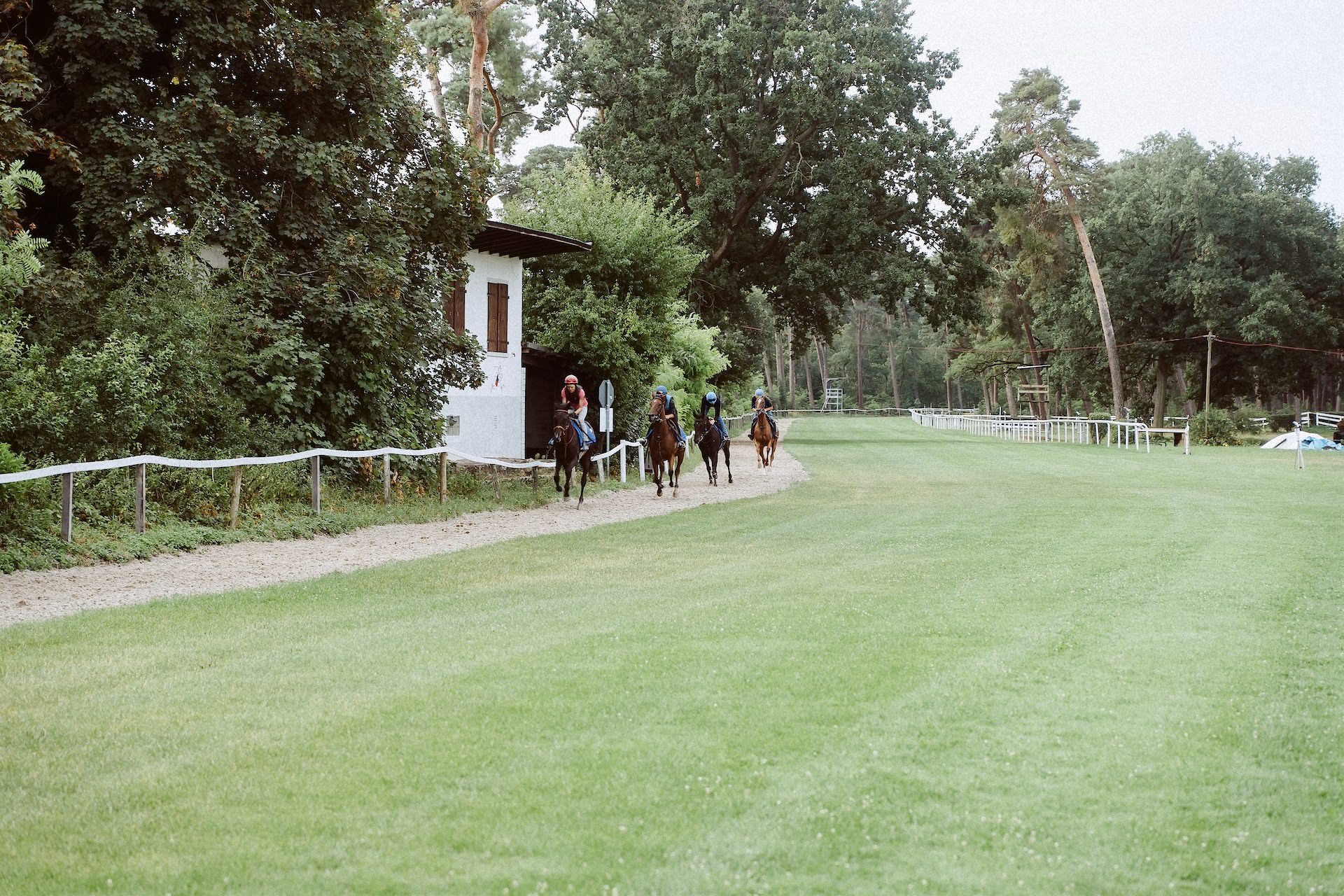
The Waldrennbahn racetrack in Mannheim-Seckenheim: The tranquillity of the place makes it hard to believe that it is located only a few-minute drive from the city.
Marco Klein runs a racing stable right behind the Mannheim turf track. It may sound odd, but he has never been in the saddle himself when gallop racings take place. But he knows exactly how to prepare thoroughbreds for it: “I don’t think anybody, including myself, would have thought I was going to have 32 horses entrusted to me in my stables, just six years after the establishment of my business,” says the former professional soldier, who served in three Afghanistan military missions. His time there taught him to stay calm even when under the utmost strain, he explains. “I had a hard time wrestling with myself to give up my safe paramedic post.” In 2015, however, the family from Viernheim unanimously decided to support his racing stable project. Since then, his father, his common law spouse, his sister and his mother have been pitching in. Marco had completed courses on expert horse training in addition to his work for a while already. As a licensed professional trainer, he has turned his passion into a profession.
“Thoroughbreds are no overbred ‘racing machines’ but creatures with their own will,” says Marco. This makes it important to recognize the individual temperament, talents, needs and characteristics of every four-legged guest. Marco got to know horses that didn’t show any desire to make an effort in the group training sessions in Seckenheim, and would “explode” on the same venue during the racing atmosphere there. Some thoroughbreds are like actors that need an audience. “The horses clearly feel, if a race was good or not — which can happen due to tactical errors made by the rider as well,” Marco explains. This is why he picks up every single horse he is responsible for from the venue after the race, patting it—no matter whether it was victorious or suffered a defeat. He finds this important.
